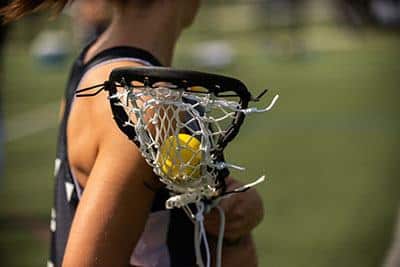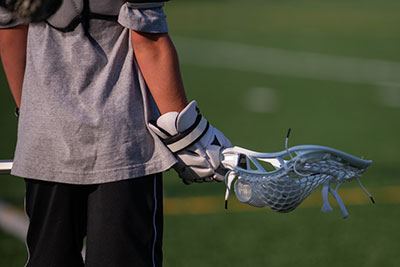Are you a lacrosse player finding it hard to stay cool in the summer months? With temperatures rising, playing any sport can become uncomfortable – and extremely dangerous. Heat-related illnesses such as heat stroke and dehydration are serious risks for athletes exposed to intense heat levels over long periods.
Playing lacrosse in the heat doesn't have to be impossible, though. Here's everything you need to know about protecting yourself from the heat this season!
More...
Take Away Key Points:
How to Play Lacrosse in Extreme Heat Conditions? All You Need to Know!
Playing lacrosse in hot weather might cause severe health issues for players, as playing on artificial or natural turf significantly affects the conditions players experience.
Artificial turf is ten to fifty degrees hotter than natural surfaces. Therefore, experts always use a specific Sling Psychrometer to measure humidity and temperature levels lacrosse players will adjust to and prevent severe health issues.
However, several protective methods exist to prevent these and maintain optimal body conditions.
Read the consultant below to find basic guidelines when playing lacrosse in extreme conditions.
1. Heat-related illnesses for playing lacrosse in hot weather

The Centers for Disease Control and Prevention (CDC) have outlined several heat-related conditions to be aware of when playing lacrosse in hot weather. This is especially important for athletes in pursuit of elevated performance levels.
The body will cool itself by sweating, but during extreme heat, sweating is insufficient to keep the body optimal. So, such a condition might lead to body temperatures rising faster and the body's temperature control system becoming overloaded, causing further complications.
All symptoms that include throwing up and fainting require medical help. In case of a medical emergency, 911 must be called immediately. Coaches, athletes, and parents need to recognize the symptoms of a heat-related illness and react instantly.
Heat exhaustion and heat stroke are two of the most severe conditions, and recognizing their differences is essential for prevention. All symptoms that include throwing up and finding require medical help.
a. Heat exhaustion
Heat exhaustion is caused by the body's inability to cool itself off, typically due to either high heat or physical exertion – or a combination of both.
The illness can also reduce blood volume. In addition, it can lead to dehydration, muscle cramping, dizziness, nausea, weakness, and headache.
b. Heat stroke
Heat stroke, on the other hand, is a most severe illness. It's a medical emergency when your core body temperature exceeds 104°F/40°C, and proper treatment must be provided immediately. If left untreated, it could result in organ damage or even death.
The heat illness includes some of the following symptoms: high body temperatures (104 degrees and more), red, dry, hot, and damp skin, confusion, fast pulse, and loss of consciousness/fainting.
While all players might develop heat-related illnesses, young athletes with predisposed conditions, including poor circulation, obesity, prescription drug use, heart diseases, and alcohol use, may be at a higher risk of a heat stroke. Thus, heat stroke can occur within twenty to thirty minutes in extreme weather conditions.
Exertional heat stroke is an illness that can occur when playing lacrosse in hot conditions and is recognized by the USA Lacrosse Sports Science and Safety Committee.
Symptoms to be aware of include uncomfortable temperatures, faintness, nausea, headaches, dizziness, a rapid heart rate, rapid breathing, and confusion. If these symptoms are present, the individual must take immediate action to avoid potentially life-threatening consequences from exertional heat stroke.
It's caused by exertion combined with the heat of the day, where the body cannot efficiently cool itself down through sweating. This causes a rise in body temperature that could lead to exertional heat stroke if not treated quickly.
Exertional heat strokes occur in July and August and are one of the three leading causes of sport-related death. So, players must take severe precautions before lacrosse events to prevent this.
While it often seems like something minor, proper medical attention should always be sought after if you think someone is experiencing exertional heat stroke because it can have severe implications for one's health.
c. Other heat-related illness conditions
Other heat-related illnesses mentioned by the CDC include dehydration, skin injuries caused by extreme temperatures such as burns and sunburns, and hyponatremia triggered by drinking too much water while taking part in an intense activity like lacrosse in high-heat conditions.
Small blisters, skin irritation, and painful, warm, and red skin are the main signs of milder issues, including sunburn and heat rash. In addition, spasms or muscle pain, tiredness, heavy sweating, weakness, nausea, vomiting, or dizziness are signs of progressive issues, including heat exhaustion or a heat cramp.
Fortunately, all these illness types are preventable with proper precautions, so read below to find the right strategies to prevent a higher risk of death for safe summer lacrosse.
2. Reducing the risk of heat illness during summer weather

Here are some of the proper strategies to prevent the risk of heat illness in young athletes and prevent sport-related death.
Frequently Asked Questions
How hot is too hot for lacrosse?
The temperatures between 95 and 104 degrees Fahrenheit are too hot for lacrosse.
Organizations and experts must provide sufficient hydration breaks for players and their teams and provide proper shade in such conditions. No equipment (except for helmets) should be used during the practice sessions.
Can you play lacrosse in the summer?
Yes, you can play lacrosse in the summer, as the primary lacrosse season takes place in the summer.
However, players must be aware of potential heat illnesses and stick to specific rules to prevent themselves from severe health problems that might result in fatal consequences.
Can you get sick from sitting in the heat?

Yes, you can get sick from sitting in the heat. It can cause heat exhaustion, and the main symptoms include dizziness, nausea, fainting, vomiting, muscle cramps in arms, legs, and abdomen, sweating and paleness, and a rapid heart rate.
The treatment includes removing from the sun, resting, and hydration with plenty of fluids.
Do female lacrosse athletes wear sunscreen?
Yes, female lacrosse athletes should always wear sunscreen when outside.
Not only can it help protect them from the sun's harmful rays, but it can also protect them from potentially serious skin damage such as sunburns or increased risk of skin cancer.
Wearing sunscreen is an essential part of protection for all athletes, and lacrosse players are no exception.
How to avoid heat stroke when playing lacrosse in the summer?
You can follow the steps below:
- staying hydrated with lots of fluids
- wearing light clothing
- wearing sunscreen
- eating a balanced diet
- taking frequent breaks during practice sessions
- paying attention to all the symptoms of the illness
Final Thoughts
Protecting yourself from heat illnesses is essential to staying healthy while playing lacrosse during the summer.
Stick to all safety guidelines, drink plenty of fluids, take breaks in a cool area when necessary, and wear light clothing whenever possible. If you are feeling any signs of heat stroke or exhaustion, do not hesitate to leave the field immediately.
Heat-related illnesses can be serious and even deadly, so it's crucial to take all precautionary measures before playing lacrosse in the heat. However, with proper hydration and safety measures, you can enjoy your time in the sun without worry.
Lacrosse can be enjoyable for all ages when taken seriously — so don't let the heat stop your fun!
